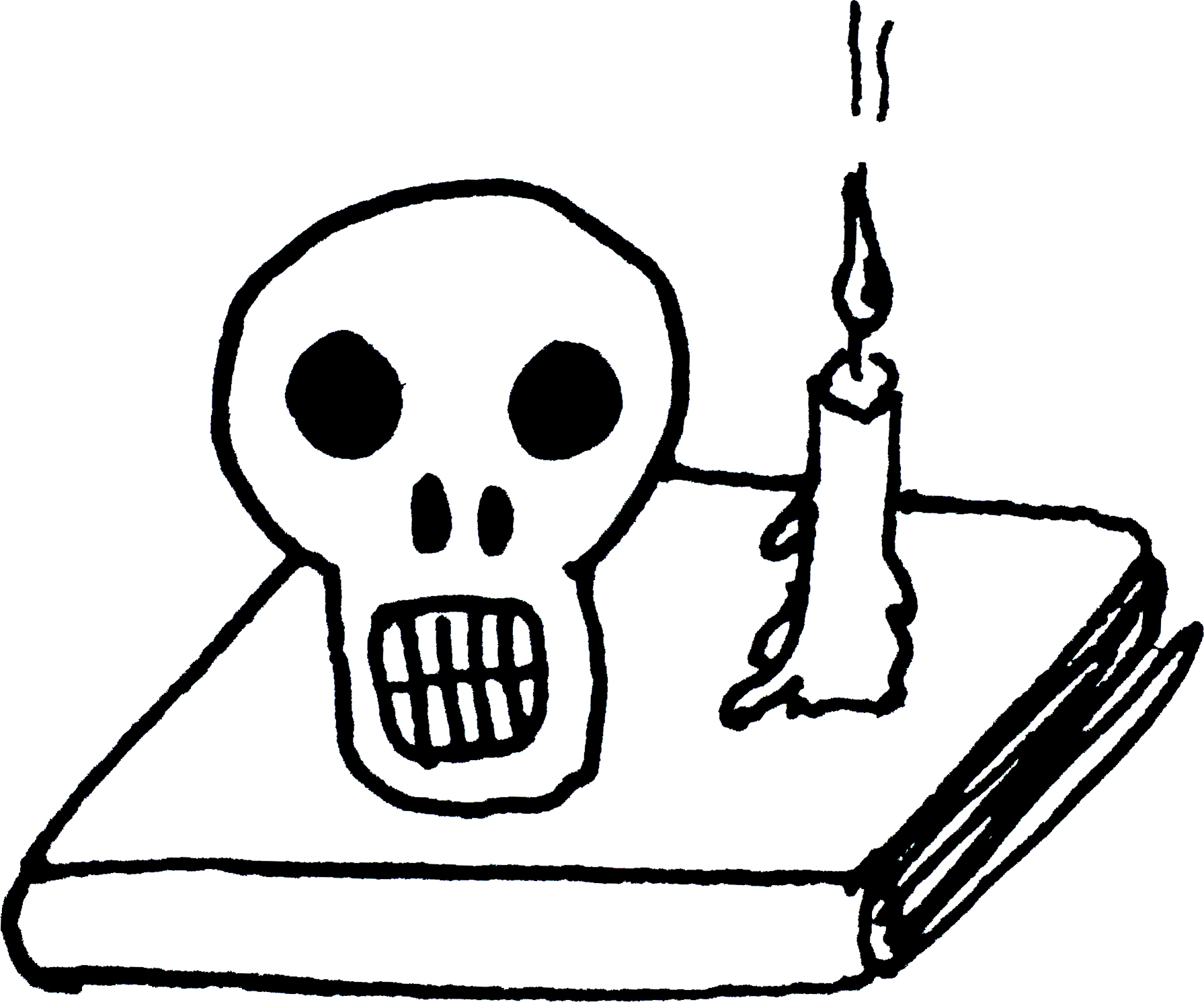The Absence of Myth
“’Night is also a sun’, and the absence of myth is also a myth: the coldest, the purest, the only true myth.”
- Georges Bataille, The Absence of Myth
Tereza Zelenkova’s images are mostly uninhabited and still; the time is frozen within them, not only through
the alchemic process of photography, but through the subjects themselves: old museum exhibits, preserved period interiors, or historic paintings, among others. It is as if the work resists the passage of time.



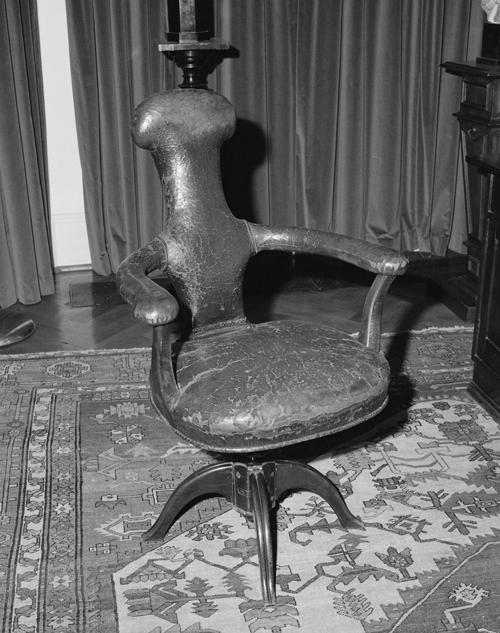
M
museum
Museum is a sort of non–site outside of time. It is a place in which we attempt to accumulate, classify and categorize all of history. Devoid of their role in the outside world, the objects in the museums and public displays are reminiscent of cadavers. Their form, once subordinate to their function, becomes increasingly visible. The sole purpose of their existence now lies in their appearance - it becomes less important what the objects mean, only how they appear.
Text: T. Zelenkova
P
Paris
Time is a currency that is calculated in past and future but it always cheats us of the present. And so, sitting at Place des Vosges surrounded by strangers, once again I’m thinking about the past of the last few days, but also the past of centuries lived in the dusty streets of Paris. The strange silence of Monday afternoon and the lack of sleep bring a feeling of slightly altered consciousness. The only thing that binds me to reality is the place, the sound of the fountains, and the endless circulation of water falling from dozens of small lion heads, only to be pumped back up in order to fall down again, and to repeat this over and over, like a cyclic poem, like history itself.
Waves of languor wash over me in regular intervals like the waves in the sea of which I’ve daydreamt so often, longing for eternity, for nothingness, for voyages to faraway lands. “Away from the big city where a man cannot be free”, Lou Reed chants into my ears, while I’m contemplating the traces of other people’s lives that litter the cobbled pavements of metropolis like cigarette butts and burnt out matches. Anew I’m trying to understand what really matters in life and how to live it so that one day, when facing the inevitable end, one can confront it devoid of any remorse. Like each photograph that I take, every love affair is a fleeting illusion of immortality. Yet even in those brief moments of happiness I know that no matter what life throws in my path nothing could save me from the severe and terminal regret that all this would vanish nonetheless, swallowed up whether by death, time or distance. And so at last, when our life lacks any kind of tragedy, we feel as close to dying as ever.
Text: T. Zelenkova
F
Freud’s study
Entering Freud’s study, which has been preserved in his former Hampstead home, one is not sure whether one has entered a psychoanalyst’s office, or a Victorian opium den. The oriental décor, antiquities, and Egyptian steles suggest something more than just a casual inquiry into working processes of human psyche. Freud’s study is anything but the sterile environment of a scientist. This place gleams with a decadent glamour and the walls could tell one too many stories of Freud’s patients’ most private and scandalous thoughts. In this dream like space, which seems to be so far from everyday reality, one is immediately drawn to lie down on the infamous couch veiled in Persian tapestries, and confess the darkest of secrets. However the piece of furniture that is somewhat more captivating than the couch itself, is Freud’s slightly grotesque leather armchair. Its design is an uncannily close match with some of the primitive idols resting on Freud’s desk. Apparently the chair was specially designed for Freud by the architect Felix Augenfeld to allow him to read in his favorite and rather peculiar position - one of his legs slung over the arm of the chair, the book held high and his head unsupported. Thus this object of my curiosity is perhaps merely a utilitarian piece of furniture, designed in order to provide comfort during its owner’s reading. On the other hand, it is possible that as such this chair, being a kind of an imprint of Freud’s unique body posture, becomes almost a surrogate for Freud himself. With its bizarre, human-like form, this chair more than anything else in this room haunts the study with Freud’s eternal presence.
Text: T. Zelenkova
 The Absence of Myth, self-published book, 2013
The Absence of Myth, self-published book, 2013



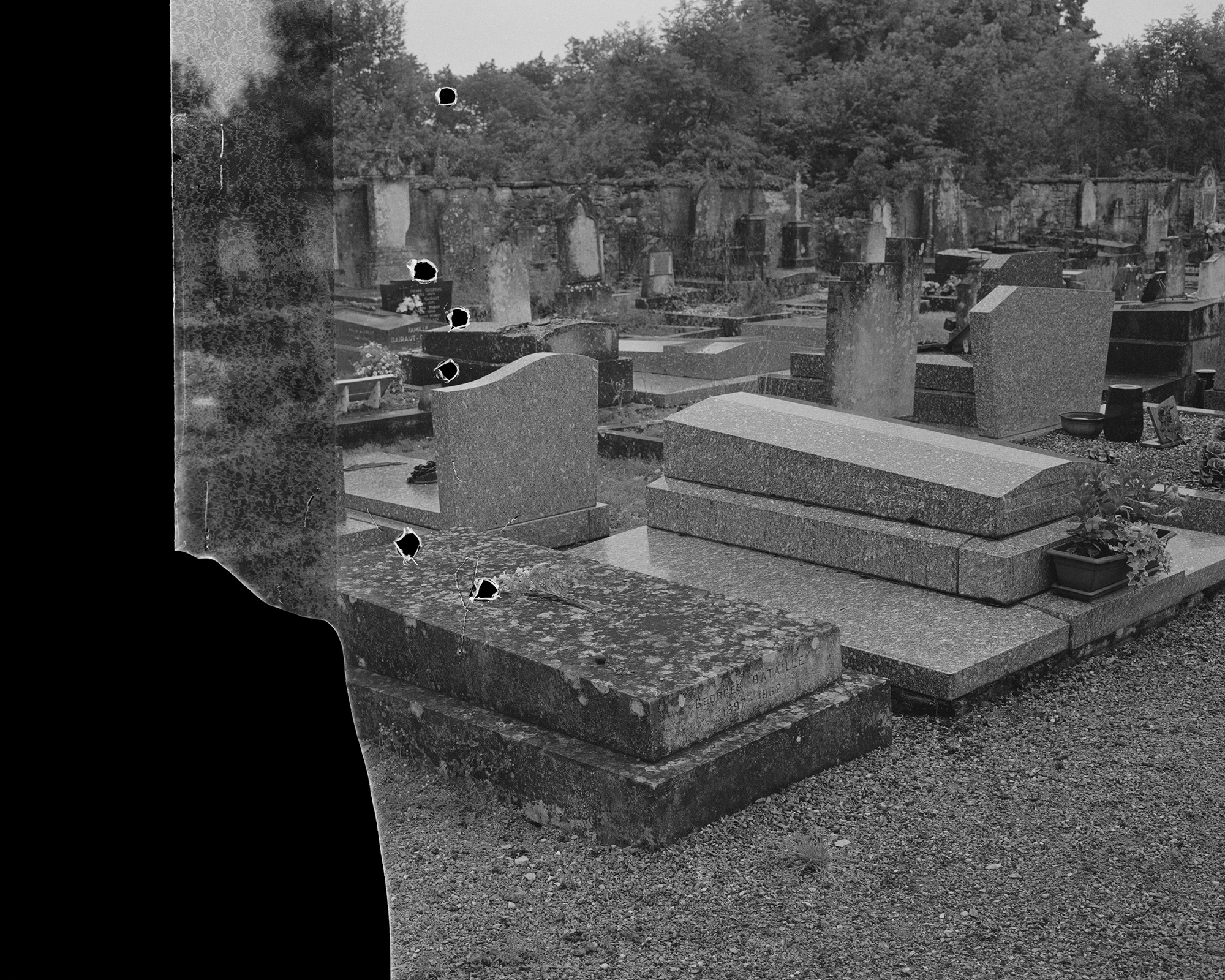
This photograph is of Georges Bataille’s grave, a resting place of the writer who so eloquently tied together the worlds of religion, death, and love, which united through acts of violence are all catalysts of innermost experiences, haunting us during nights of self-induced insomnia and anguish. In more general terms, this photograph is an image of death. It opens itself up to nothingness, a dark abyss created by the excess of light hitting the sensitive surface of photographic paper; the film ripped and damaged violently interrupts the depicted scene and exposes the hollow emptiness, the eternity in solitude - still, non-existent, under the ground, silenced like the image itself. Bataille’s friend Maurice Blanchot interestingly observed that images and cadavers have a lot in common. They are both directly bound to something that once was but in their stillness they show us a quite different picture than we were familiar with. Which picture is more genuine, I don’t know, but important is the change, the gap formed between life and its subjective, unique vision formed by series of imperceptible gestures and minor accidents, such as the one that created this photograph.
Text: T. Zelenkova


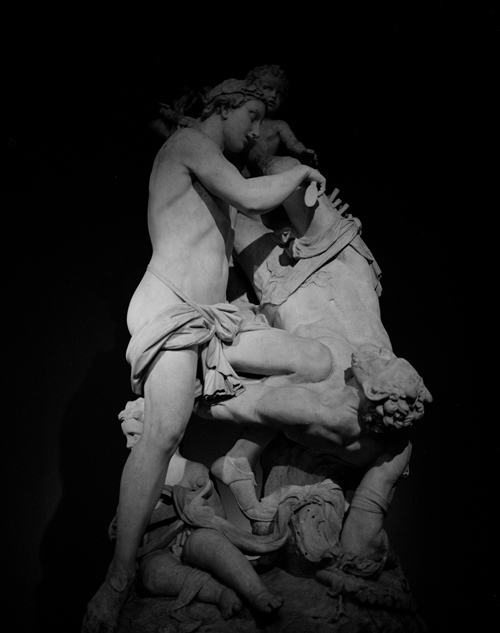





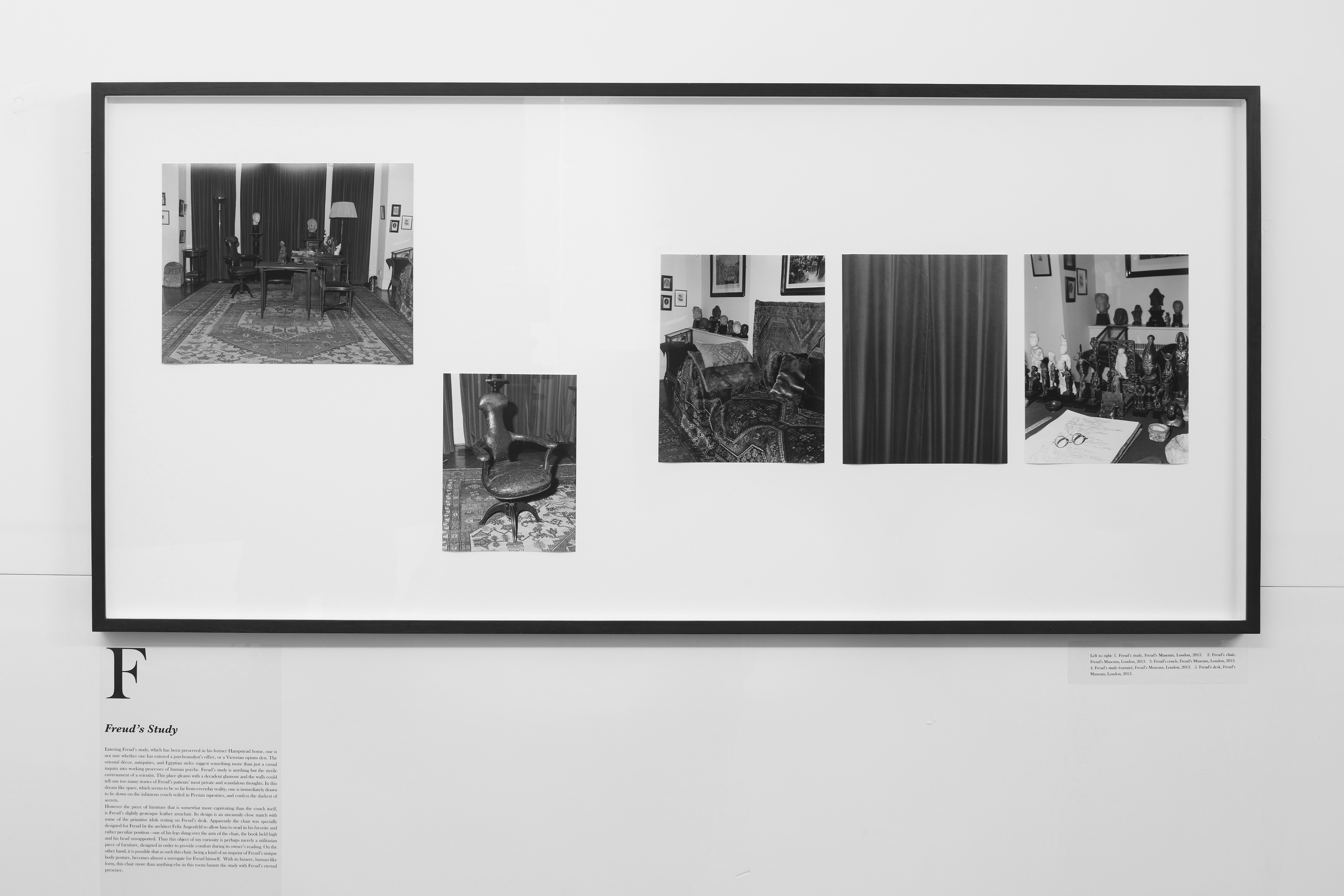


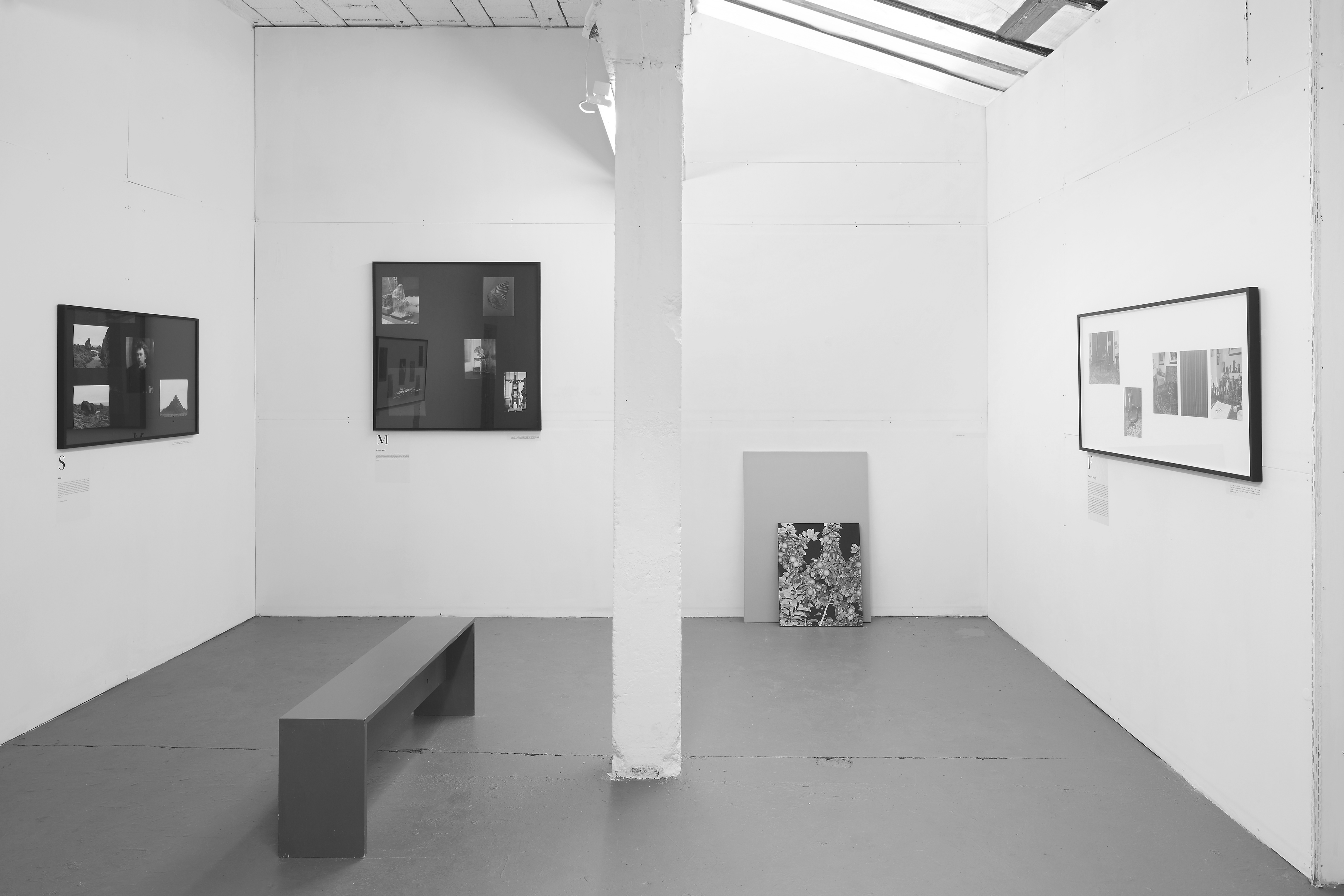
Copyright: Tereza Zelenkova, 2022
